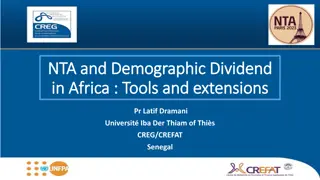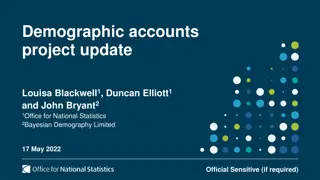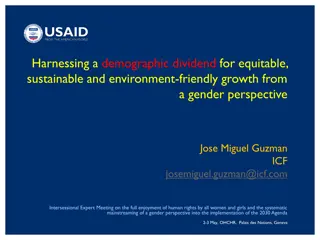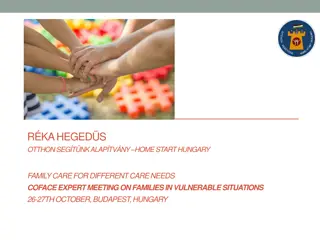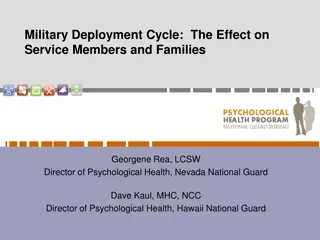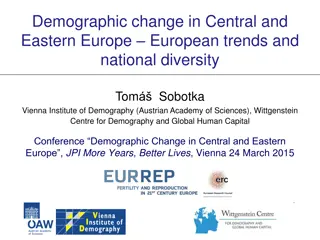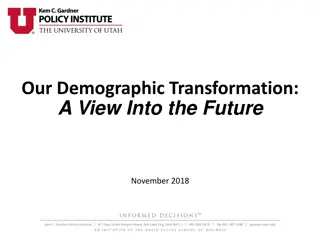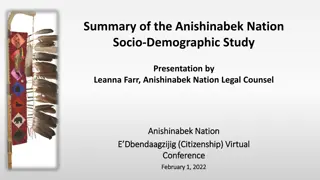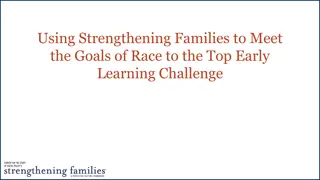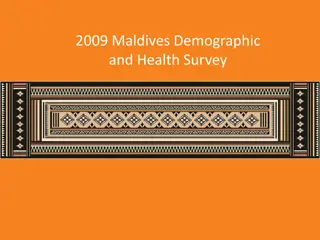Strengthening Families to Address Demographic Challenges
Strengthening families is crucial to combat demographic challenges such as declining population, economic implications, and societal shifts in the EU. The focus is on promoting family values, supporting parenthood, and addressing issues related to aging populations and cultural changes. The impact of these factors on future generations is significant, necessitating proactive measures to ensure sustainability and well-being.
Download Presentation

Please find below an Image/Link to download the presentation.
The content on the website is provided AS IS for your information and personal use only. It may not be sold, licensed, or shared on other websites without obtaining consent from the author.If you encounter any issues during the download, it is possible that the publisher has removed the file from their server.
You are allowed to download the files provided on this website for personal or commercial use, subject to the condition that they are used lawfully. All files are the property of their respective owners.
The content on the website is provided AS IS for your information and personal use only. It may not be sold, licensed, or shared on other websites without obtaining consent from the author.
E N D
Presentation Transcript
Addressing the demographic Addressing the demographic challenges by strengthening families challenges by strengthening families Bal zs Moln r Bal zs Moln r
Demographic Demographic Winter in Winter in the the EU EU - EU is loosing economic and political relevance in the World due to declining population - Population: 1960-20%; 2020-10%; 2070-6% - Economic strength: 2008-28%; 2014-16% - No single Member State has enough births for the renewal - Ageing- sustainability health care- workforce - Children are invisible, adults only culture - Demographic challenges are reticenced
Demographic Winter in the EU Demographic Winter in the EU - Parents are only seen as workforce missing out; motherhood, childrearing not valued - Charges against the traditional family, the basic building block of any society - Relativisation of marriage between one woman and one man, but! constant push for same sex marriage - Churches representing eternal values condemned, some already give in - Abortion seen as the peak of women s rights
Old-age-dependency ratio in EU27 and in Hungary (%) 34% 33% 32% 31% 31% 32% 30% 30% 29% 30% 31% 28% 28% 30% 27% 28% 29% 27% 26% 29% 28% 26% 27% 27% 26% 24% 25% 25% 24% 24% 22% 20% EU 27 Hungary Source: Eurostat
Culture of loneliness - Proportion of people over 65 by type of household, 2020 Cyprus Estonia Poland Slovakia Denmark Slovenia Latvia Ireland Italy Austria Czechia Romania Finland Sweden 0% 10% 20% 30% 40% 50% 60% 70% 80% 90% 100% Single adult - total Adult living in a couple - total Source: Eurostat Adult living in another type of household - total
Due to the impending climate catastrophe, it is not worth giving birth to a child" NEGATIVE NEGATIVE answers answers 2021 2021 NOE NOE 2021 ELFAC 2021 ELFAC 2020 KINCS 2020 KINCS research 69% research 71% 86% Hungarians Hungarians were worth worth bringing bringing a a child European families also strongly reject such a linkage between having a child and the environmental catastrophe were the the least least able child into into this able to to identify this world world because identify themselves themselves with because of of the with the climate catastrophe, catastrophe, but other large the statement statement that that it it is is not not the climate
Successful demographic policies Successful demographic policies - Strengthening communities vs individualism - Helping young Europeans to decide for family and children with decent employment, housing and prospects - Address prolongation of childbirths - Reconciliation of work and family with focus on the family - No one size fits all solution respect for traditional, cultural and religious specifities- EU no melting pot - Intergenerational solidarity mutually important for both elderly, parents and grandchildren
Changes in the number of women aged 20-39 and over 60 in Hungary (January 1, 2000- 2020) 1,600,000 Women aged 60 and older 1,556,603 1,500,000 1,400,000 1,421,746 1,300,000 1,200,000 Women aged 20- 39 1,214,070 1,186,558 1,100,000 2017 2000 2001 2002 2003 2004 2005 2006 2007 2008 2009 2010 2011 2012 2013 2014 2015 2016 2018 2019 2020 Source: Central Statistical Office The number of 20-39 year olds showed an increase until 2007, then we can see a sharp decrease End of the 2nd "Ratk -Generation"). The impact of aging societies and increasing life expectancy can be seen in the intense increase in the number of women over the age of 60.
Development of marriages in Hungary (1941-2020) 120,000 107,820 100,000 79,074 72,000 80,000 72,434 60,000 35,520 40,000 20,000 1941 1949 1960 1970 1980 1986 1990 2001 2010 2011 2018 2019 2020 2021 Source: Central Statistical Office 2021 - preminilary data In 2020, the number of marriages continued to rise, 3.1% more couples have decided to tie the knot compared to in 2019, despite restrictions caused by the coronavirus Since 1986, the number of marriages has not been as high as in 2020 Between 2010 and 2020, the number of marriages almost doubled, increasing by 89.5% In 2021 the number of marriages reached 72 000
Changes in the number of divorces in Hungary (1941-2020) 30,000 29,856 25,000 20,000 17,410 15,000 14,979 10,000 5,000 6,858 0 1941 1949 1960 1962 1970 1980 1987 1990 2001 2011 2018 2019 2020 Source: Central Statistical Office In 1987, the number of divorces in the country was remarkably high, at which time 29,856 couples divorced The number of divorces is at a six-decade low, last it was back in 1962 when less couples have divorced
Changes in the number of abortions and live births in Hungary (1950-2020/2021) Abortions Live births Abortions Live births 220,000 250,000 206,817 223,347 200,000 180,000 200,000 160,000 195,567 140,000 150,000 120,000 93,000 100,000 100,000 80,000 60,000 50,000 40,000 20,000 16,300 1,707 23,901 0 0 1950 1954 1958 1962 1966 1970 1974 1978 1982 1986 1990 1994 1998 2002 2006 2010 2014 2018 Source: Central Statistical Office The number of abortions has dropped by 36% in the last decade, it has last been less in 1954 Today, there was one abortion for every four live births today, and in the 2000s there was one abortion for every three live births
Humanitarian Humanitarian crisis crisis- - war war in in Ukraine Ukraine Millions of people fleeing the country Mostly families families: women with children, elderly 260 000+ arrived to Hungary already Christian Aid organization working in the first rows Caritas providing food, shelter, and a shoulder to rely on
Thank you for your kind attention! www.koppmariaintezet.hu/en






